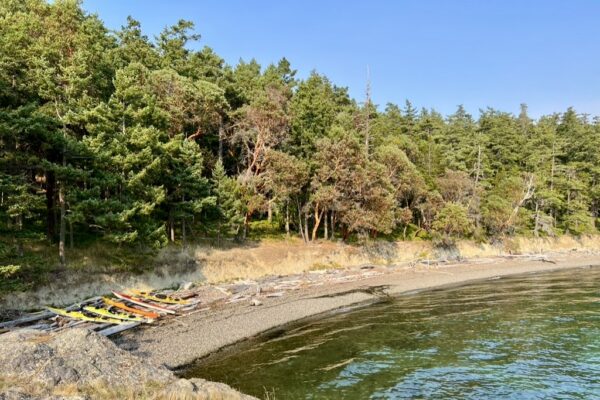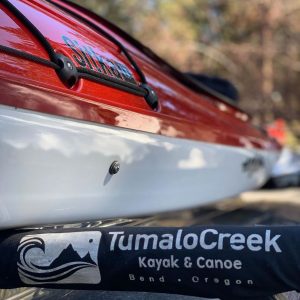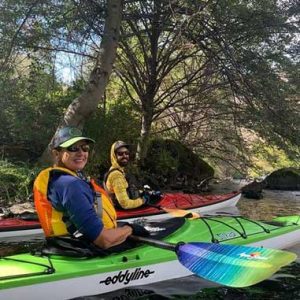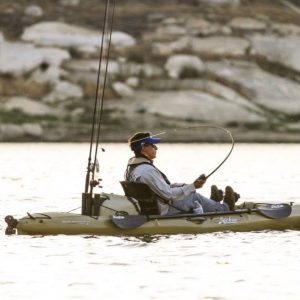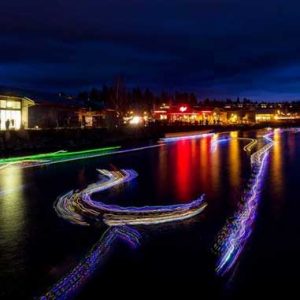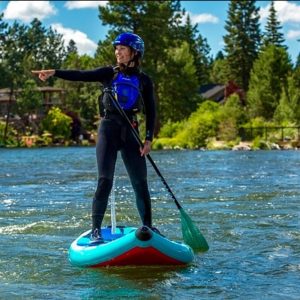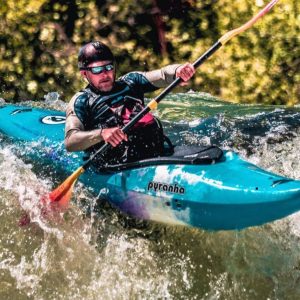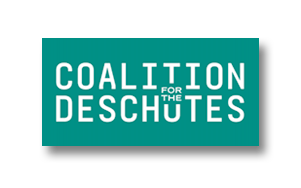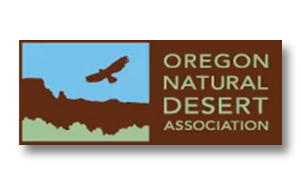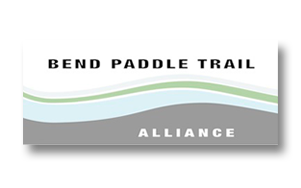Tumalo Creek’s multi-day kayaking tours in the San Juan Islands offer adventures and memories of a lifetime. Read one guest’s trip report.
Trip Report & Photos Contributed by Ed Johnson—Tumalo Creek San Juan Islands Tour Guest
My move from Maryland to Central Oregon during the 2023 summer made possible a decades-long bucket list adventure to the San Juan Islands of the Pacific Northwest. One of my kayaks, a 19ft Current Designs Nomad GTS, made the cut for the move cross-country specifically for this type of adventure.
Living in Maryland, I’ve been fortunate to paddle many rivers, lakes, bays, and coastal Atlantic waters from Canada to Florida. My new home, Bend, Oregon, lies east of the Cascade Mountains and is less than an hour’s drive from fabulous mountain hiking, biking, camping, skiing, and even a few kayaking spots. That said, Central Oregon is not a kayaker’s paradise like the Mid-Atlantic, where a one to two-hour drive provides a wide variety of paddling opportunities for novices and experts alike.
A visit to another store in Bend provided me with a list of several nearby kayaking locations used by recreational kayakers (mountain lakes and the flat water of the Deschutes River). I thanked the staff member for the tips, but they must have noticed my disappointment and suggested I visit Tumalo Creek Kayak & Canoe.
Discovering Tumalo Creek Kayak & Canoe in Bend, OR
I walked into the shop minutes before closing time and was immediately impressed by the huge inventory equipped to serve the recreational kayaker, whitewater, and SUP enthusiast. Clayton, manning the shop located beside the Deschutes River, was engaging, and I shared with him a little of my paddling history and experience. I wasn’t sure if he was joking when he said, “There are only about ten active sea kayakers in Central Oregon.” I replied, “Well, now there are 11!”
I mentioned that a San Juan Islands kayaking adventure was on my bucket list. Clayton’s eyes widened, and he said, “We just happen to be leading two trips to the San Juan Islands in two weeks! One is a 4-day trip, and the other a 6-day trip. With your background, I think you would love the 6-day trip.”
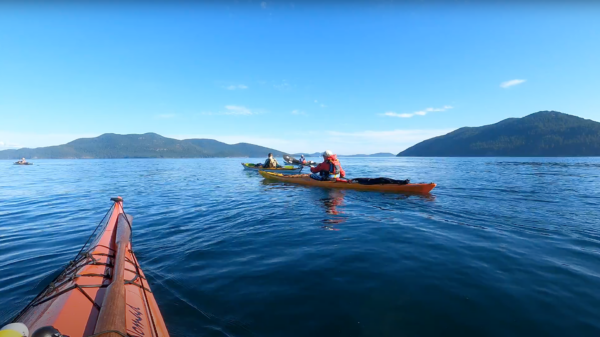
My wife, Donna (not a kayaker), and I had only arrived in Bend two weeks earlier. We were still unpacking and far from settled into our new home. Donna read me like a book after I told her of my conversation with Clayton. “You must go,” she said, “don’t wait until next year. You have time now. GO!” I love Donna!
The Unforgiving Yet Rewarding Waters of the San Juan Islands
The San Juan Islands are an archipelago in the Salish Sea of Washington State and British Columbia, Canada. The Pacific Ocean sloshes back and forth through the Strait of Juan de Fuca to the west, the Strait of Georgia to the north, and Puget Sound to the south. Tides are big; 9-foot swings are common. Currents are significant (1-2 kts), and narrow passages can become impassable for all but the strongest and most skilled paddler. The water is cold year-round (<60 degrees F). It’s an unforgiving environment and not for beginners. It is a kayaking gem for the prepared paddler.
I got my gear together and met up with Clayton and his employer, Geoff (owner of TCKC), at Washington Park in Anacortes, WA, on the evening of September 12. We camped in Washington Park ($27), a nice quiet campground with hot showers just 1.5 miles from the Anacortes ferry terminal, where we were to rendezvous at 8:30 am the next morning. There I would meet the other two Tumalo Creek clients, Bruce and Sonnie. This would be their seventh multi-day sea kayaking trip in the San Juans with TCKC. For the next six days, we would have a fantastic trip experiencing this Pacific Northwest kayaker’s paradise.
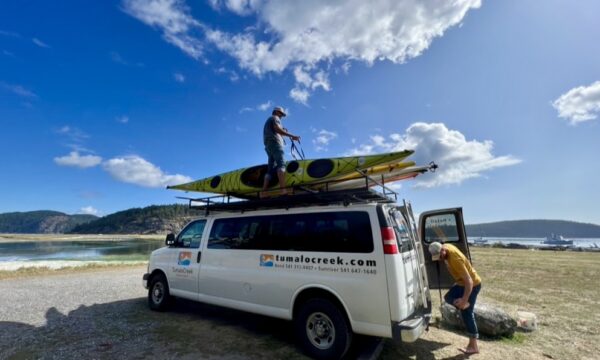
The five of us hopped into the company van with our kayaks on the roof and drove onto the ferry that would take us to Lopez Island. Forty minutes later, we disembarked and drove for 10 minutes to Spencer Spit State Park, where we unloaded and parked the van for the duration of our trip.
Ferry Adventures & Starlit Nights
Our ferry had been an hour late leaving Anacortes. I sensed some anxiety in Clayton due to the delay; he was eager to get on the water and start paddling. We needed to get through Obstruction Pass before the ebb tide. We were successful and arrived at our campsite on Doe Island around 5 pm. Sitting in my camp chair beside my tent as twilight was replaced with starlight, I laughed out loud with joy. As my eyes adjusted to the darkness, revealing the nighttime beauty, I thought, “Wow! This is spectacular.” Clayton joined me, saying, “Pretty awesome, eh?”
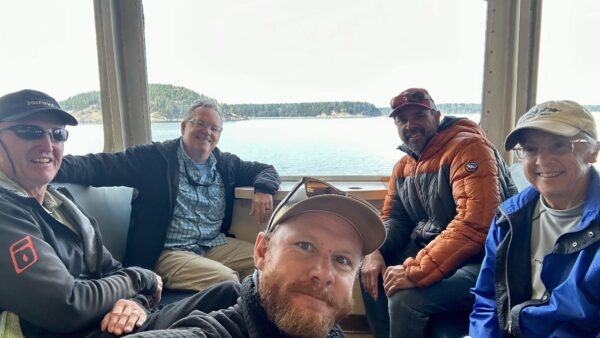
Bruce, who retired from the US Forest Service about 20 years ago, and Sonnie, a retired registered nurse, are experienced kayakers and campers. Their favorite and regular kayak adventures are in the Pacific Northwest (US and Canada) and the Sea of Cortez (Baja, Mexico). I was captivated by Bruce’s forest firefighting stories. He was a dedicated civil servant.
My conversations with Geoff suggested that he has mellowed from his admittedly youthful risk-taking days when he sought out whitewater, big waterfalls, powerful whirlpools, and unsupported month-long sea kayaking expeditions. On this San Juan Islands trip, Geoff was the perfect guide. Each morning he queried the group. A typical exchange would go like this: “How are you feeling this morning? Here’s what I suggest we do… let’s stick to the plan I described last evening. We’ll launch at ____ hrs, paddle to ____ for a break, reassess the current, and if it is as predicted, we should have a ___ kt push to the tentative campsite at ___ island. If we encounter a headwind or less favorable current, we can fall back to plan B and camp at ___ island. Is everyone okay with that?”
Geoff’s leadership style was decisive and deliberate. He kept us informed of the decisions he was making and why. His voice was calm and confident. He and Clayton were observant of our energy level, and need for rest, water, and food. We were all questioned throughout the day as to whether or not we were comfortable with proceeding as planned. Geoff and Clayton worked well as a team. I felt safe with them and confident in their ability to assist with rescues and manage mishaps.
Nearly Perfect Weather and a Close-knit Team
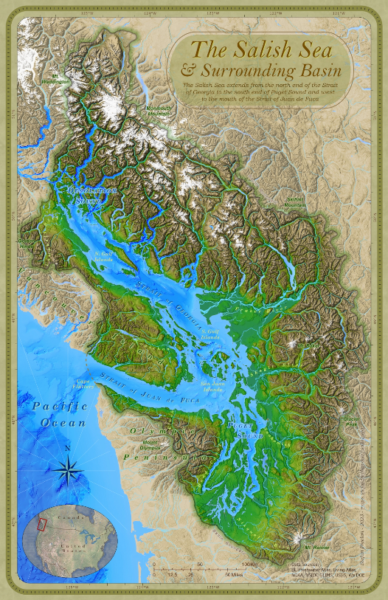
Map of the Salish Sea & Surrounding Basin, Stefan Freelan, WWU, 2023
Our trip was blessed with nearly perfect weather. Air temperatures ranged from the upper 60s (daytime) to lower 50s (nighttime). Winds were mostly light and variable, except for day 2, when we encountered an 8-10 kt headwind for two hours as we paddled the crossing from Orcas to Clark Island.
The wind seemed to cancel out the predicted 1.5 kt current push. We opted for plan B, camping on Matia Island rather than going further to Sucia as planned. A 2-minute, nearly bare swim at Matia Island camp satisfied my curiosity about “how cold is 60-degree F water?” Ca, ca, ca, COLD!
Clayton, an enthusiast and knowledgeable guide, is a professional ski patroller at Mt Bachelor ski area, a short drive from Bend, OR, in the winter. When our group was paddling, he and Geoff took turns as lead and sweep kayak. We were a tight paddling team. Onshore, Geoff and Clayton were vigilant about checking tide and relocating our kayaks to higher ground, safe from rising water and ship wakes. Clayton and Geoff worked efficiently in camp too, preparing nutritious and delicious hot breakfasts and dinners and cleaning up afterward. Lunches were typically deli meat sandwiches with lettuce, tomato, pickles, apples, and chips.
Local Wildlife Encounters
Several times during our trip, we saw porpoises. Two types of porpoises typically frequent the Salish Sea—Dall’s and Harbor porpoises; we saw Harbor porpoises. We did not see Orcas (killer whales), which are related to dolphins. We saw harbor seals, fish, crabs, and beautifully colored starfish, and an assortment of shorebirds.
Despite warnings, our campsites were not raided by marauding raccoons as Geoff experienced in previous trips. Precautions were taken to avoid raccoon encounters. The one animal most annoying on this trip was the hordes of yellow jackets that thrive on the food prepared at campsites. Their numbers were so intense that state officials deployed yellow jacket traps in the campsites. The population of yellow jackets seems unaffected by the traps which were all nearly full. Food and drink should be covered until ready to eat.
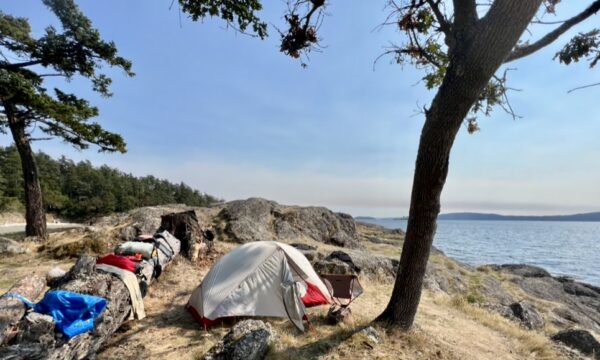
The Diverse Beauty of the San Juan Islands
The San Juan Islands are beautiful. The shoreline varies from rocky cliffs to boulder-strewn, pebble and sand beaches. Many shorelines are riddled with picturesque old logs. These can be a challenge to walk through, especially when carrying a kayak. Shoreline logs and breaking waves require vigilant situational awareness. The high energy, cold-clear coastal water environment of the San Juan Islands, the surrounding islands, and mountain views make paddling in this region so rewarding.
We were blessed with spectacular views of the northern Cascade mountains, including snow-covered Mt. Baker (10,786ft).
Much of the shoreline is privately owned. Some shorelines are not suitable for landing a kayak. Washington State Parks maintain many campsites and equip them with composting toilets. Not all campsites have potable water, and beginning in September less frequented camps have their water turned off for the season. Cell phone coverage is widely available but should not be relied upon. As always, VHF radios and satellite communication are highly recommended.
Salish Sea tides are big, and so are the currents. It’s not a place for novice kayakers or even skilled kayakers with little or no experience in this environment. Weather conditions can change fast from good to gnarly. If you’re not completely confident in your skills and those of your paddling partners, then seek out professionals with local knowledge and experience, at least for your first visit. You surely will enjoy your trip more.
My experience with Geoff, Clayton, Bruce, and Sonnie far exceeded my expectations of a San Juan Island adventure. I’m looking forward to repeating the same or similar trip next year! Let’s get busy planning!
Curious about booking your own San Juan Islands adventure with Tumalo Creek? December ONLY receive 20% off!
Contact Tumalo Creek for more info.
6-day Trip Stats
Day 1: Paddled 9.27 miles, camped on Doe Island, no potable water. Got water at Doe Bay resort the next morning.
Day 2: Paddled 12.59 miles, lunched on Clark Island, camped on Matia Island, no potable water.
Day 3: Paddled 9.25 miles, lunched on Sucia Island, camped on Patos Island, no potable water.
Day 4: Paddled 13.82 miles, camped on Jones Island, no potable water.
Day 5: Paddled 9.94 miles, got water at Orcas ferry landing, camped on Shaw Island (water usually available).
Day 6: Paddled 6.23 miles to take-out at our starting point 6 days earlier—Spencer Spit State Park.
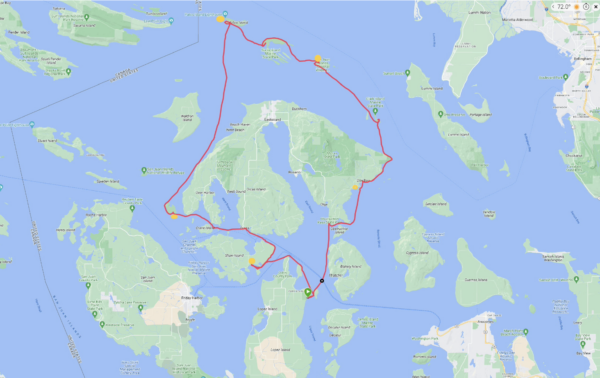
Six-day route beginning/ending at Spencer Spit (green arrow) on Lopez Island and moving counter clockwise. Yellow dots are overnights.
Check out Ed’s YouTube video of his San Juan Islands kayaking adventure with Tumalo Creek!
About the author: Ed Johnson joined CPA in 2000 as a beginner kayaker and has benefited immensely from formal and informal skill improvement opportunities. He’s grateful to the past and present leadership of CPA, its trip leaders, and dedicated club members for sharing their knowledge, commitment to the club, and their work with local and state government to enhance access and promote the sport.

